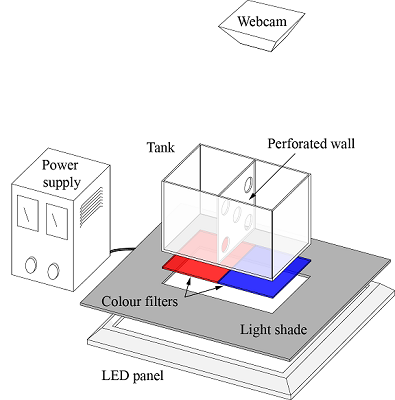University of Strathclyde
CFD & FSI-RG
Computational Fluid Dynamics &
Fluid Structure Interaction
Research Group
qing.xiao@strath.ac.uk +44 (0)141 548 4779
University of Strathclyde
Computational Fluid Dynamics &
Fluid Structure Interaction
Research Group
qing.xiao@strath.ac.uk +44 (0)141 548 4779
Pharmaceutical Influences on Locomotion of Acquatic Animals by Experimental Measurements and Numerical Simulations
There are two types of muscles in most of the animals including zebra fish, one is called white muscle, which is responsible for the acceleration; another one is called red muscle that is responsible for sustainable low speed. As can be seen in Figure 1, muscle dystrophy will lead to the detachment of muscle fiber that is related to the swimming velocity of zebra fish. Besides, the change of muscle connections will have an influence on the energy transmission to the tail and causes different propulsion efficiency as well as other related parameters. Thus, in order to have a better understanding of the distribution of muscle dystrophy, a novel idea of analyzing forces and moments based on experimental measurements and numerical simulation via CFD software is provided for this interdisciplinary research.

In order to achieve the objectives, the process is divided into two parts, experimental measurements and numerical simulation. For experimental measurements, apparatus similar to Figure 2 should be used as a container for zebra fish, the tank is separated by a perforated wall into two compartments, according to the specific experiment requirements, the perforated wall can be removed. Webcam is used to record the swimming behavior of zebra fish.

Depending on the age of zebra fish, the apparatus can be different as well. For example, for zebra fish larvae or embryos, petri dish is used as the container. Once the video is recorded, a custom-made Matlab algorithm will process the video to get the useful parameters such as average velocity, tail beat frequency and amplitude. Typical shape of zebra fish will be captured and kept for future works. Once the pre-processing of data is finished, we will move onto the numerical simulation part.
As for the numerical simulation, CFD is a commonly used tool. We use OpenFOAM, which is an open source CFD software to simulate the motion of zebra fish. Firstly, we assume that the zebra fish can be divided into several parts like head, trunk and tail; each part is seen as rigid body and is connected to form the whole body. In order to simulate the swimming behavior accurately, typical shapes of zebra fish having captured can be used to build the model, some parameters like velocity, tail beat frequency and amplitude can be seen as input parameter to simulate movements of specific parts of zebra fish. Once the movement for each rigid body is achieved, influences among each part can be studied via post-processing of the movements like forces, moments, vortices, etc. by comparing the differences between the normal zebra fish and zebra fish with muscle dystrophy at different ages, we can see the influences of muscle dystrophy on skeletal muscle and the corresponding swimming behavior in the life span. In addition to the application in developing new medicine for muscle dystrophy, once the OpenFOAM program is developed, the program can be applied in the biomimetic field to test the maximum propulsive efficiency for the model with different combination of movements.
Copyright © 2014 - All Rights Reserved - University of Strathclyde CFD & FSI-RG